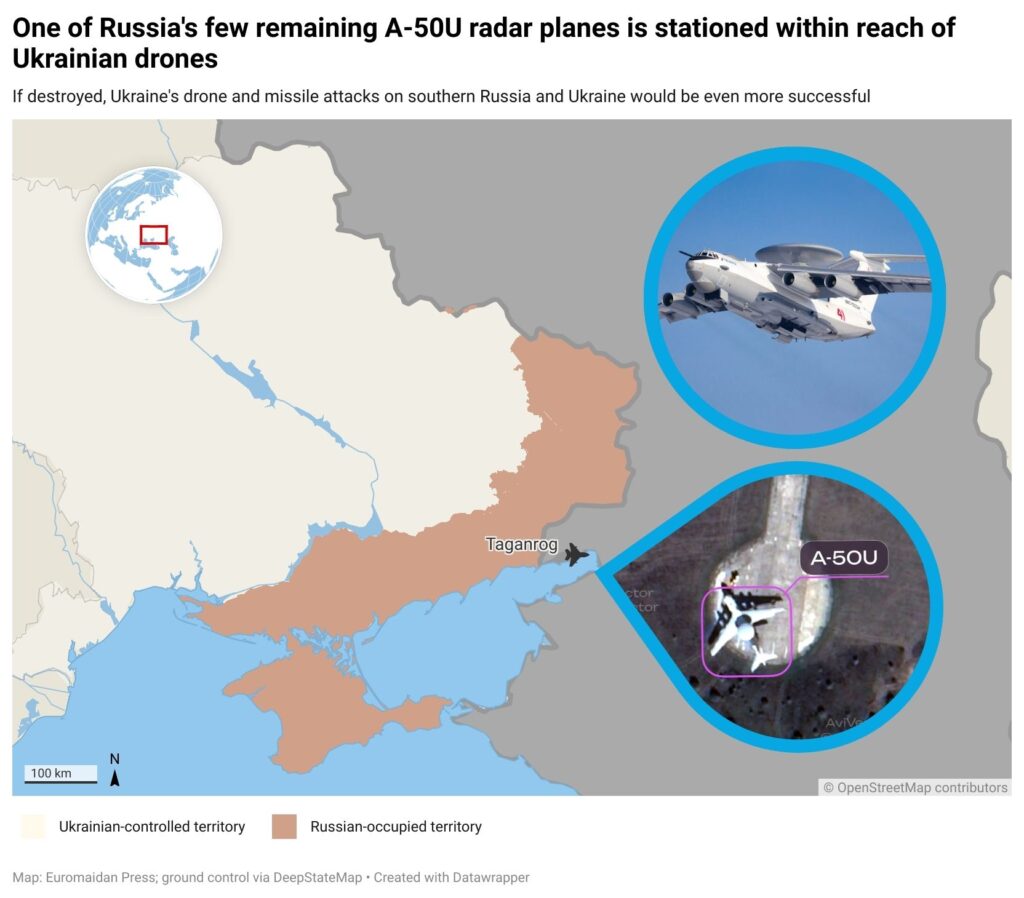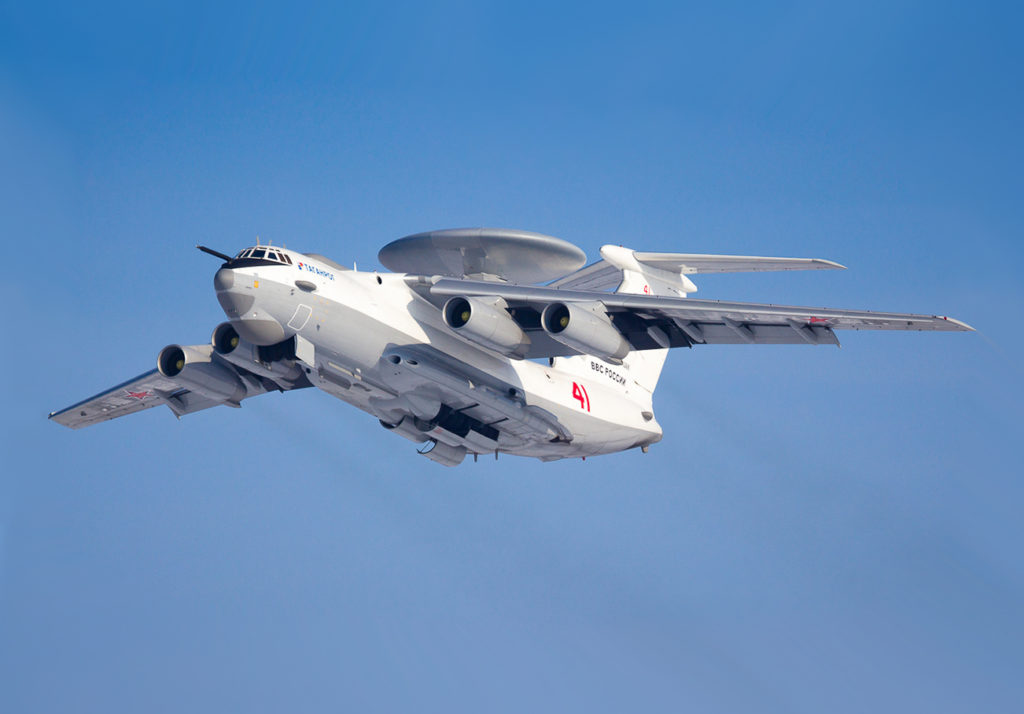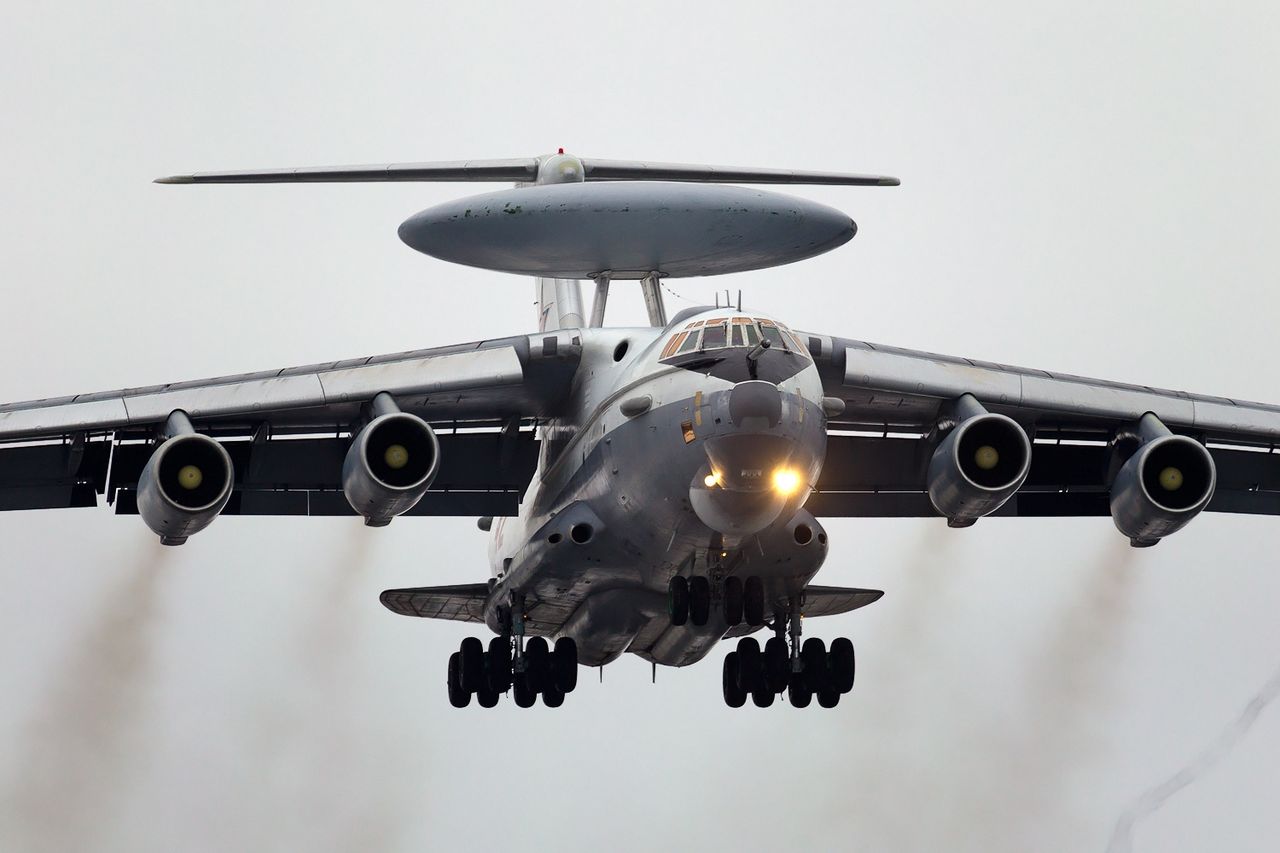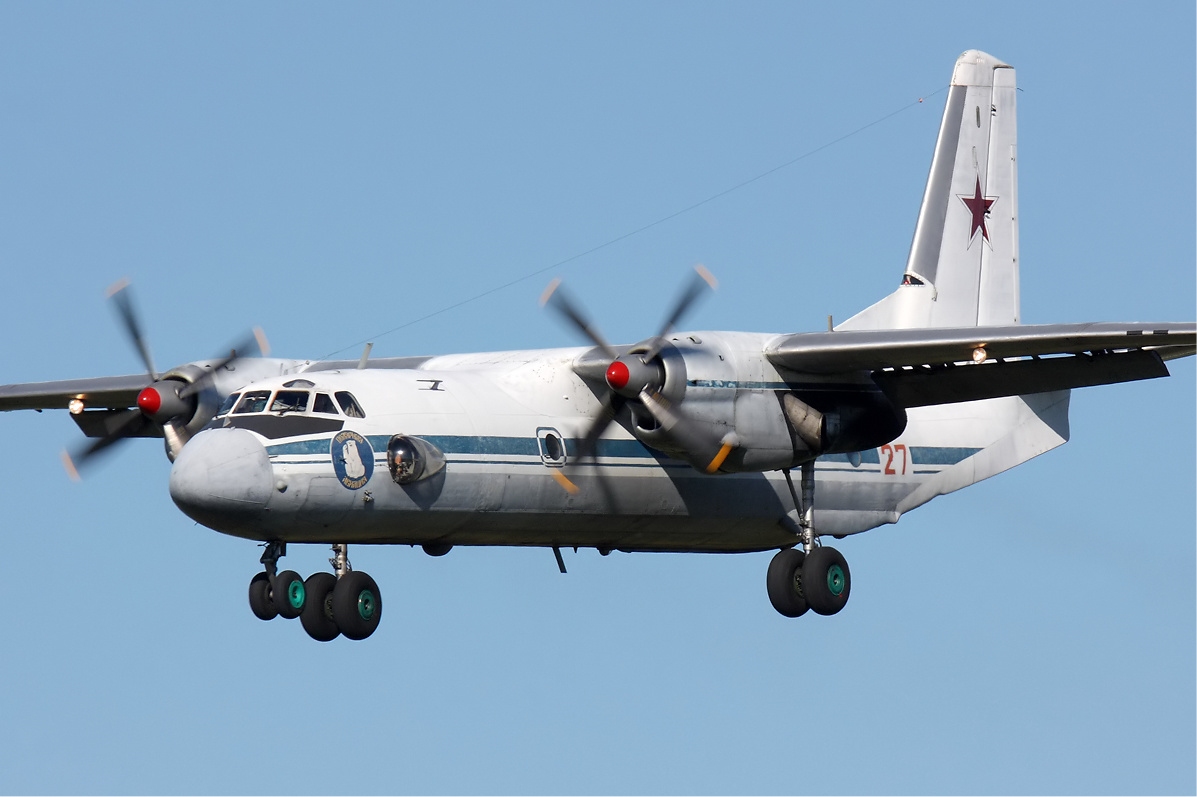- Russia may be down to just four flyable Beriev A-50U radar planes
- One of the valuable jets reappeared in southern Russia recently
- The A-50U with its long-range radar could be a top target for Ukraine's drones
- If the A-50U is destroyed, Ukraine's drone and missile attacks on southern Ukraine and southern Russia would be even more successful
One of Russia's few Beriev A-50U radar planes has made a rare appearance near the front line of Russia's 43-month wider war on Ukraine.
It's a risky move by the Russians. Capable of detecting Ukrainian aircraft, drones, and missiles from hundreds of kilometers away, the A-50Us are priceless eyes in the sky. But they're also big fat targets in the air—and when they're on the ground.
For the Russians, the deployment of one of potentially four surviving A-50Us is an opportunity to bolster their air defenses in southern Ukraine and southern Russia—and perhaps blunt the impact of Ukraine's escalating campaign of drone and missile strikes.
For the Ukrainians, the deployment may be a chance to take out yet another A-50U—and further blind Russian air defenses. That would make it even easier for Ukrainian drones and missiles to get through to southern Russia and occupied Crimea.
AviVector, which scrutinizes satellite imagery of Russian air bases, was among the first independent observers to notice the four-engine A-50U parked at Taganrog air base—in southern Russia 170 km from the front line—on 28 September.
One operational A-50U with the serial number RF-94268 and nose number Red 41 "arrived at the base between Sept. 24 and 28, likely for maintenance or repair," AviVector noted. There's a Beriev production facility at the Taganrog base.
Vulnerable base
But the base is well within range of most of Ukraine's one-way attack drones and air- and ground-launched cruise missiles. Indeed, the Ukrainians have already targeted Taganrog several times, apparently aiming for the Beriev facility and any warplanes parked nearby.
That's why the analysts at AviVector were surprised to spot the A-50U at the vulnerable base. "This is the first time such a valuable aircraft for Russia has been based so close to the front line, within the reach of most Ukrainian UAVs."

Russia's dwindling A-50U fleet
According to aviation expert Tom Cooper, the Russian air force began Russia's wider war on Ukraine in February 2022 with potentially seven active A-50Us—four-engine Ilyushin Il-76 airlifters with radar radomes on their fuselages and stations for up to 15 crew and battle-managers.
In the aftermath of the 1 June Operation Spider Web—coordinated strikes on five Russian air force bases by short-range attack drones that the Ukrainian state security service, or SBU, smuggled near the bases in hijacked long-haul trucks—the Russians may be down to just four flyable A-50Us. Five if they managed to repair one of the radar planes the Ukrainians damaged in a February 2023 drone attack.
Ukraine's successful A-50U hunting campaign
Ukraine has systematically targeted Russia's A-50U fleet throughout the war, eliminating or damaging multiple aircraft:
- A Ukrainian drone damaged an A-50U on the ground in Belarus in February 2023.
- In January 2024, a long-range Ukrainian missile—reportedly a US-made Patriot—shot down an A-50U over the Sea of Azov in southern Ukraine.
- Six weeks later, in February 2024, another Ukrainian missile, an ex-Soviet S-200, struck a third A-50U in the same area.
Russia scrambles to replace irreplaceable assets

The Russian air force swiftly grounded its surviving A-50Us and scrambled to replace the two or three lost planes. That meant cycling at least one older and possibly unflyable A-50U—out of several dozen Beriev built in the 1980s—through the Taganrog plant.
When the dust settled, the Russians had at most five—possibly just four—flyable A-50Us. And most of them had scattered to northern Russia or the Russian Far East, helping to keep them safe from Ukrainian strikes.
There may have been two A-50Us in western or southern Russia. Two A-50Us aren't terribly useful, given that it takes at least three of the lumbering planes to maintain anything approaching around-the-clock coverage of a given area for even a limited span of time.
The surviving radar planes would be even less useful if Ukraine managed to destroy yet another one, reducing the fleet to a new low of potentially just three operational airframes.






